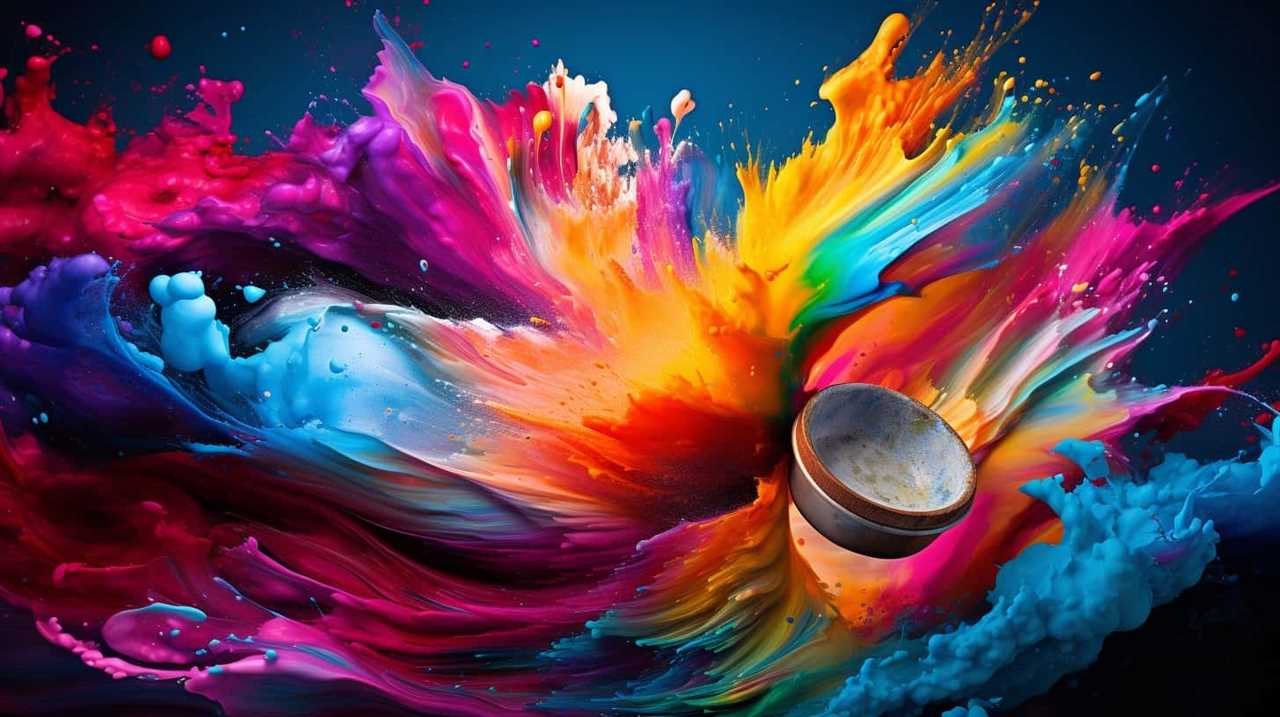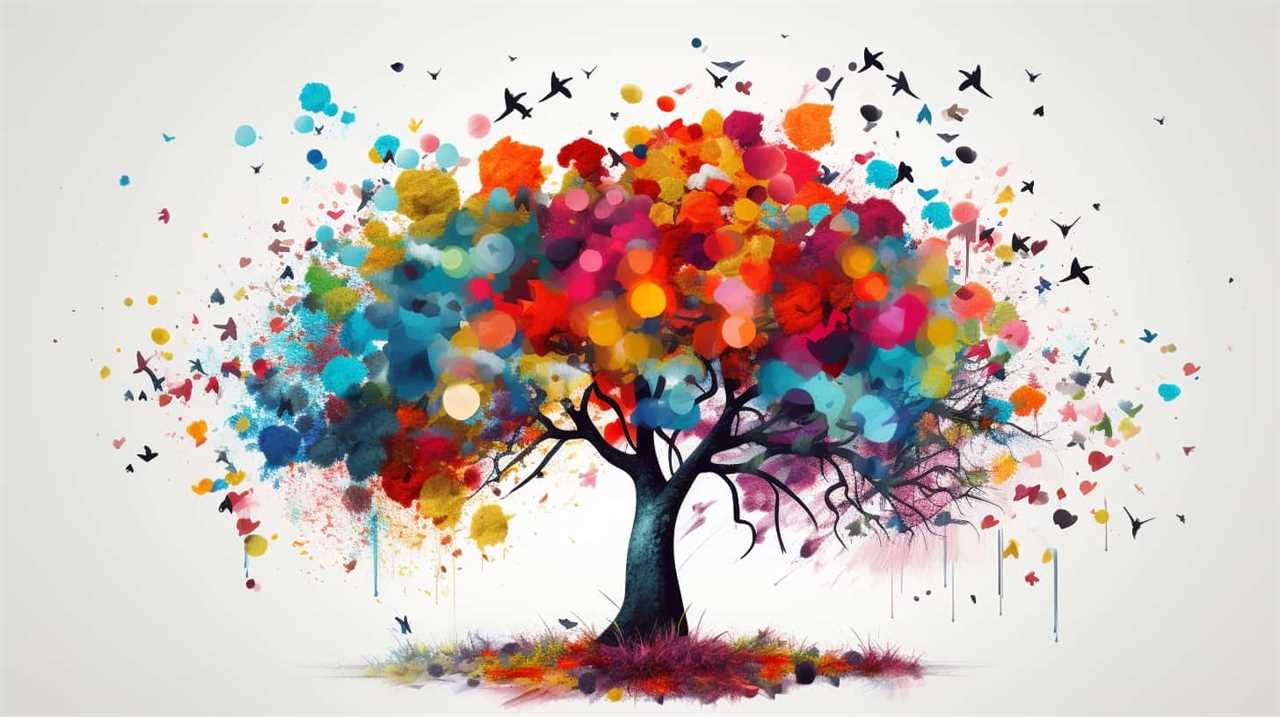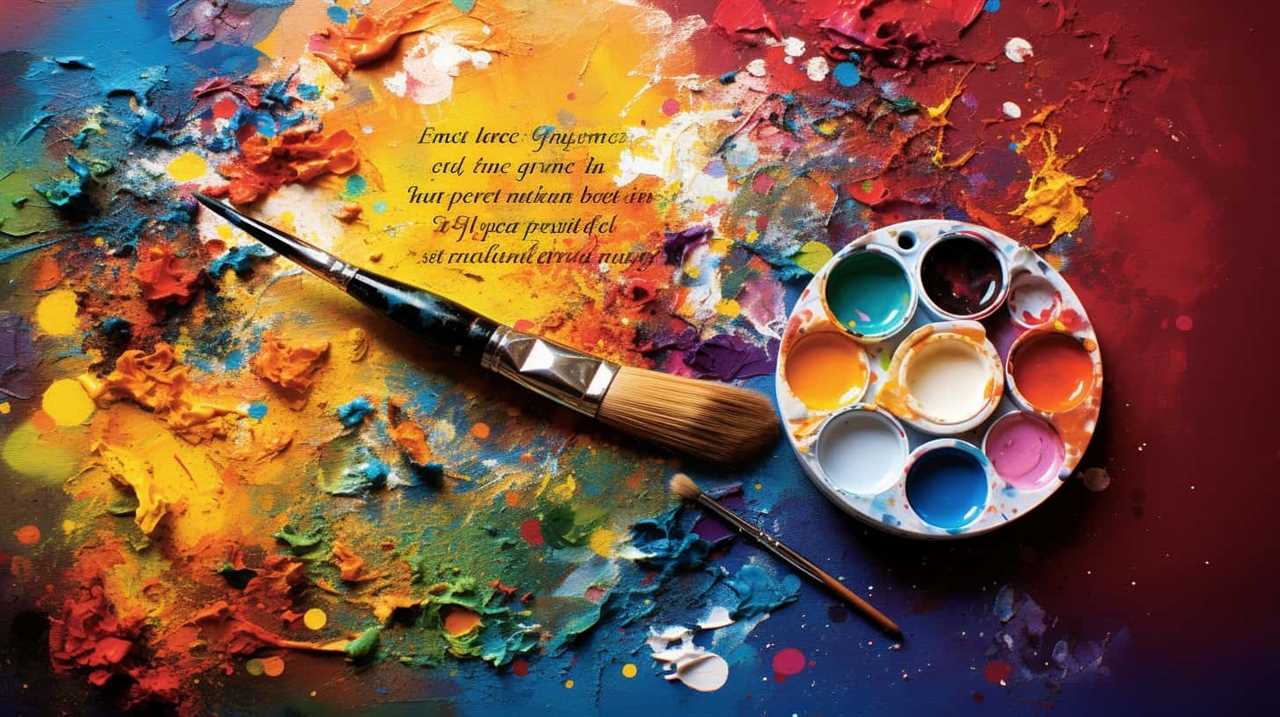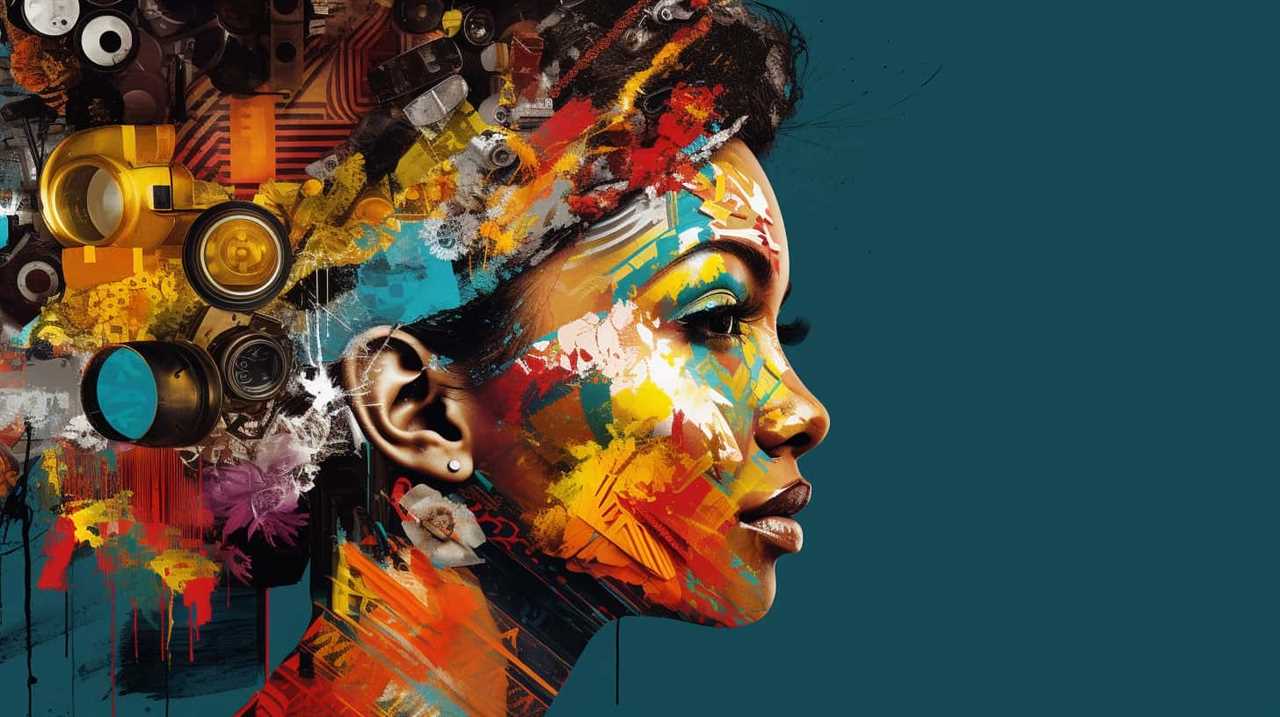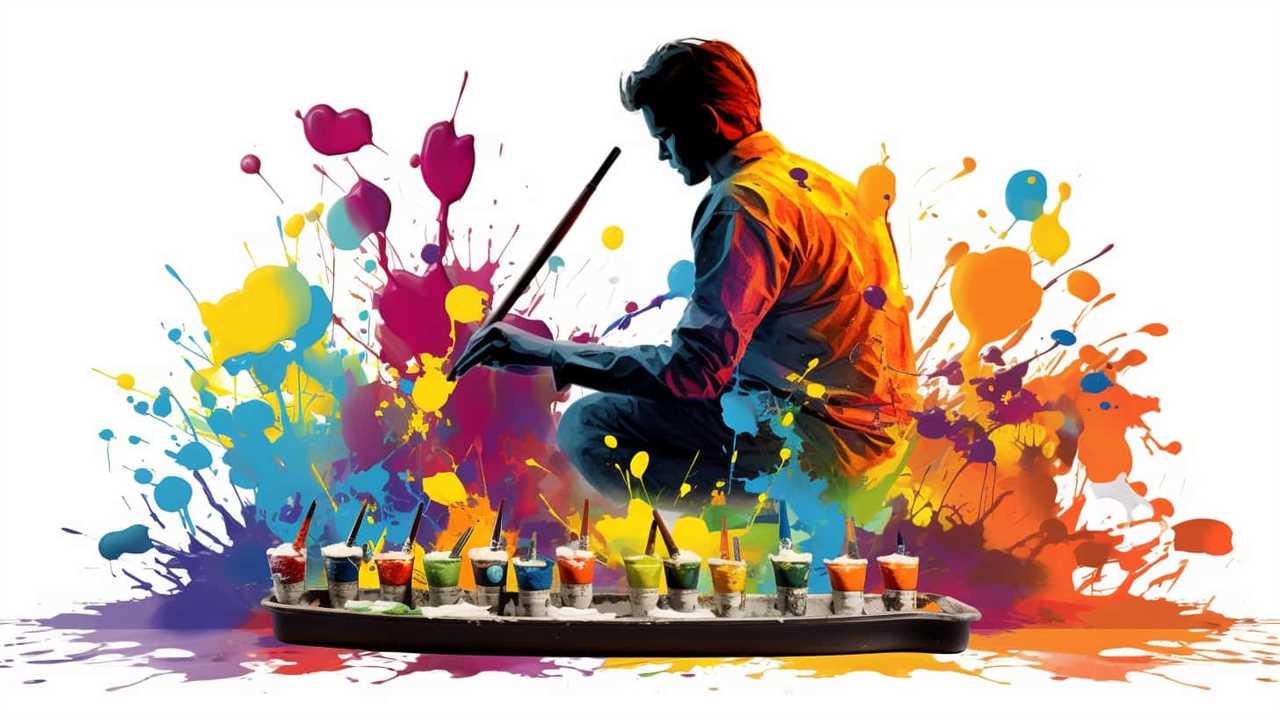Have you ever gazed upon a canvas, mesmerized by the brushstrokes that seem to dance with emotion?
Art critics, like us, claim that art shapes society. It’s not just a pretty picture on a wall, but a powerful force that ignites change and liberates minds. However, it’s not just the content of the art that influences society, but also the evolving artistic techniques. As artists experiment with new mediums and styles, they push the boundaries of what is considered “normal” and challenge societal norms. This constant evolution and innovation in the art world can spark new ideas and inspiration for societal change.
Through its vivid colors and thought-provoking imagery, art has the ability to shape cultural movements, challenge norms, and transform public perception. Art acts as a mirror, reflecting the realities of society and pushing us to question the status quo.
As critics, we believe that artists have a profound responsibility to use their talents to shape a more inclusive and diverse world. Join us as we explore the transformative power of art and its role in shaping society.
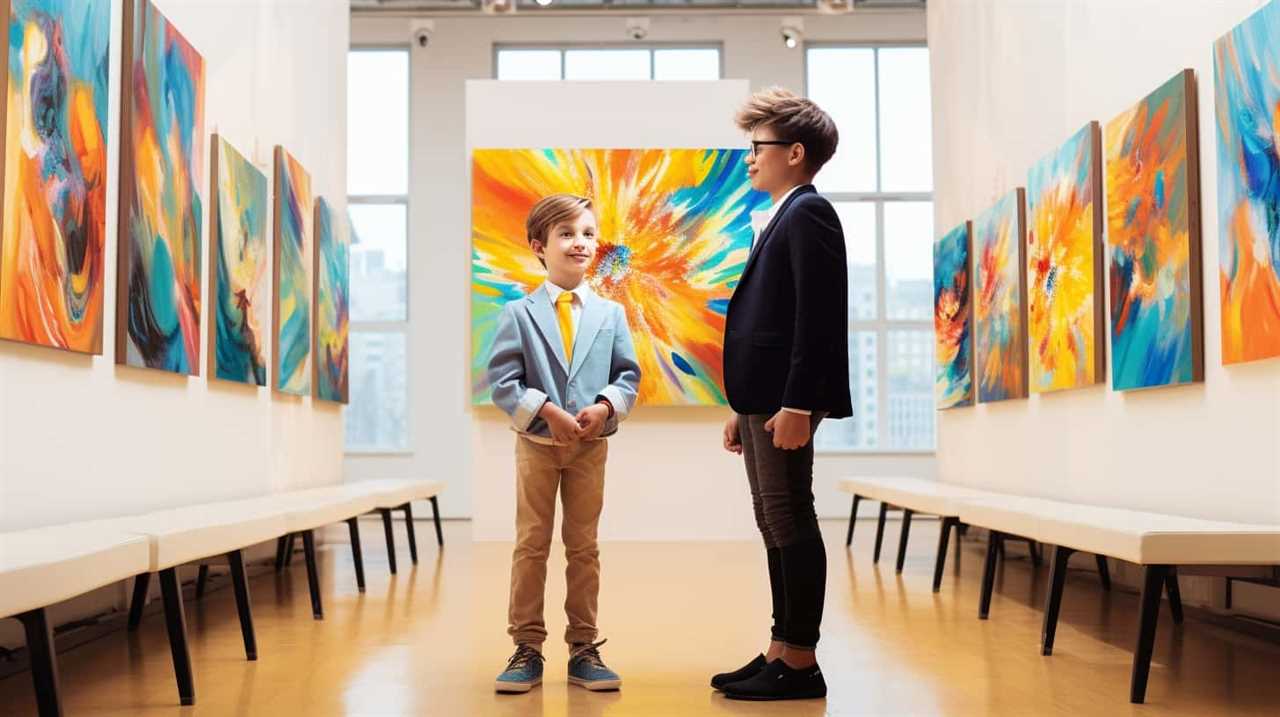
Key Takeaways
- Art provokes strong emotions and challenges the status quo
- Art mobilizes communities and inspires collective action
- Art critiques cultural stereotypes and dismantles harmful assumptions
- Art serves as a catalyst for change and social justice
The Power of Art in Shaping Society
Art has the power to actively shape society over time. Through its impact on cultural expression and influence on public opinion, art has the ability to challenge norms, provoke thought, and inspire change.
Cultural expression is a fundamental part of any society, as it reflects the beliefs, values, and experiences of a particular group of people. Art plays a crucial role in this expression, as it provides a platform for individuals to explore and communicate their unique perspectives. Whether through visual arts, literature, music, or performance, art has the capacity to challenge societal conventions and push boundaries, allowing for the exploration of new ideas and perspectives.
Furthermore, art has a significant influence on public opinion. It has the power to shape the way people think, feel, and perceive the world around them. Art can evoke emotions, spark discussions, and challenge prevailing narratives, thereby shaping public discourse and understanding. It has the potential to challenge existing power structures, amplify marginalized voices, and provide a platform for activism. By presenting alternative perspectives and narratives, art can inspire individuals to question the status quo and work towards social change.
As we explore the impact of art on society, it’s essential to recognize its influence on cultural movements. Art has been a driving force behind many social and political movements throughout history. It has played a crucial role in movements such as feminism, civil rights, and LGBTQ+ rights, providing a means for marginalized communities to express their experiences and demand equality. By addressing social issues and advocating for change, art has the power to mobilize people, create unity, and drive collective action.
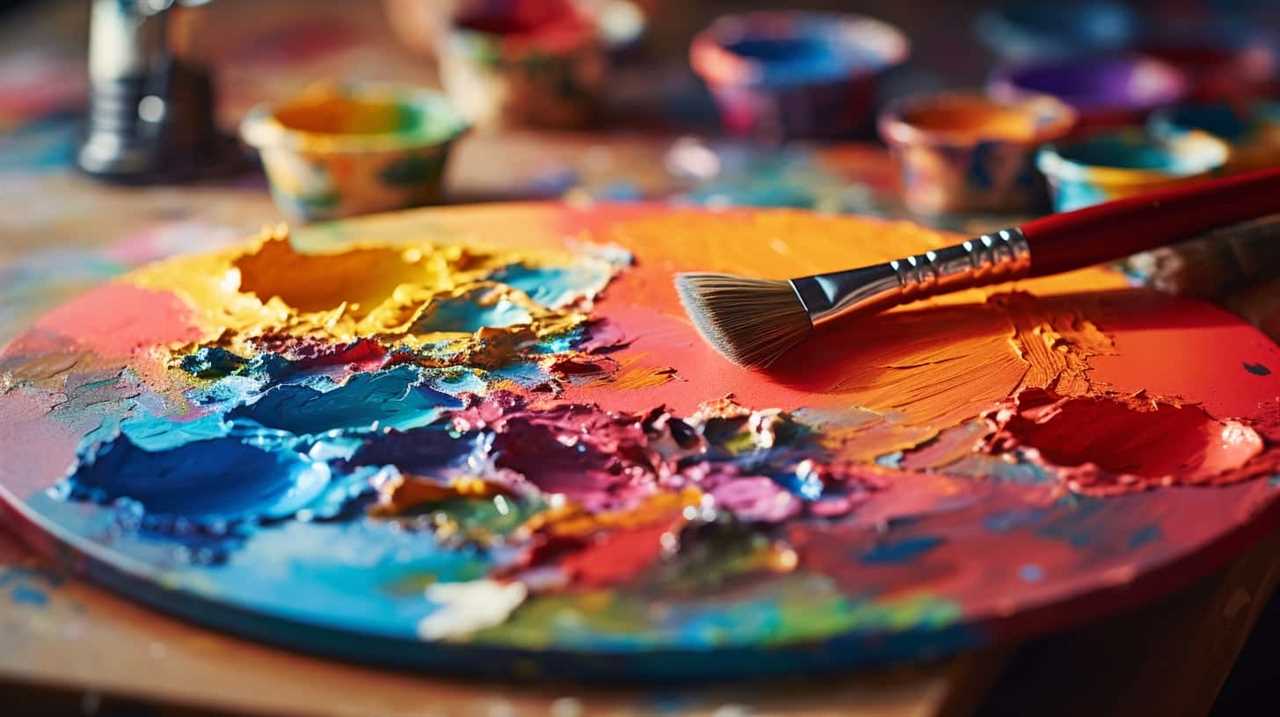
As we delve further into the discussion of art’s influence on cultural movements, it becomes evident that art has the potential to not only shape society but also create lasting change. Its impact on cultural expression and influence on public opinion are powerful tools for liberation and social transformation. Through art, we can challenge societal norms, advocate for justice, and inspire a brighter future.
Art’s Influence on Cultural Movements
Art has a profound influence on cultural movements. It serves as a mirror that reflects the realities and struggles of society. Through its ability to challenge norms and provoke thought, art acts as a catalyst for change. It sparks conversations and inspires action. By shaping collective consciousness, art becomes a powerful tool in shaping cultural movements and driving social transformation.
Art as Societal Mirror
As art critics, we believe that the influence of artistic expressions on cultural movements is undeniable. Art has always served as a reflection of society, capturing the essence of its values, beliefs, and struggles. Through various forms such as painting, sculpture, music, and literature, artists have the power to depict the realities of their time, making a profound societal impact.
To illustrate this point, let us consider a table that showcases some notable cultural movements and the artworks that exemplify them:

| Cultural Movement | Artwork | Significance |
|---|---|---|
| Renaissance | Mona Lisa by Leonardo da Vinci | Symbolized the rebirth of humanistic values and artistic innovation |
| Abstract Expressionism | No. 5, 1948 by Jackson Pollock | Captured the emotional intensity and spontaneity of post-war America |
| Feminist Art Movement | The Dinner Party by Judy Chicago | Challenged patriarchal norms and celebrated women’s history and achievements |
| Pop Art | Campbell’s Soup Cans by Andy Warhol | Critiqued consumer culture and mass production |
These examples demonstrate how art not only reflects societal changes but also serves as a catalyst for change. In the next section, we will delve further into the transformative power of art as a catalyst for social and political movements.
Catalyst for Change
Through our analysis and observation, we’ve found that art has a significant impact on cultural movements, acting as a catalyst for change. Art, as a form of expression, has the power to challenge societal norms and ignite conversations that lead to transformation. Here are five ways in which art serves as a platform for activism:
- Visual imagery: Art can capture the essence of a social issue, evoking strong emotions and creating a visual representation of the struggle.
- Storytelling: Artists can use their work to tell stories that shed light on marginalized voices, amplifying their experiences and fostering empathy.
- Provocation: Art has the ability to provoke thought, challenging the status quo and pushing people to question deeply ingrained beliefs.
- Collective action: Art can bring communities together, inspiring collective action and mobilizing individuals to work towards social change.
- Representation: By depicting diverse perspectives and experiences, art can challenge dominant narratives and empower marginalized communities.
Shaping Collective Consciousness
In our analysis, we’ve observed that art critics assert that the influence of art on society is evident in its ability to shape collective consciousness.
Art has the power to shape and redefine our collective identity, influencing the way we see ourselves and our place in the world.
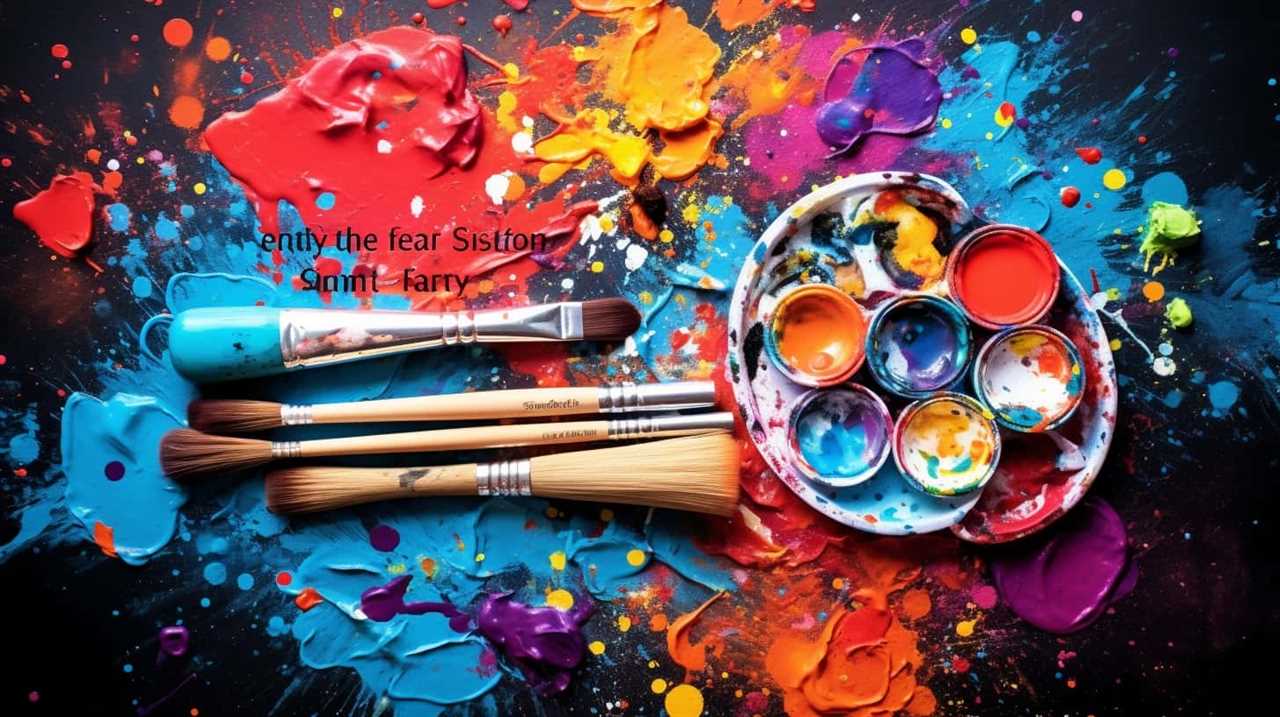
Through artistic expression, we’re able to explore and challenge societal norms, sparking conversations that lead to cultural evolution.
Art has the unique ability to transcend language and cultural barriers, allowing it to connect with people on a deep emotional level.
By challenging the status quo and presenting alternative perspectives, art encourages critical thinking and fosters a sense of introspection within society.
It prompts us to question our beliefs, values, and assumptions, ultimately leading to profound shifts in societal consciousness.

Art as a Catalyst for Social Change
Art critics argue that art plays a significant role in shaping society by serving as a catalyst for social change. Art, when used as a form of activism, has the power to challenge existing norms and ignite conversations that lead to transformative action. Here are five ways art can act as a catalyst for social change:
- Provocation: Art has the ability to provoke strong emotions and challenge the status quo. Through bold and thought-provoking imagery, artists can shed light on social issues that are often overlooked or marginalized.
- Awareness: Art can raise awareness about social injustices and ignite empathy within viewers. By depicting the experiences of marginalized communities, art can bridge the gap between different social groups and foster understanding.
- Mobilization: Art has the power to mobilize communities and inspire collective action. Artistic expressions such as murals, street performances, and protests can bring people together, creating a sense of unity and solidarity.
- Amplification: Art can amplify the voices of marginalized individuals and communities, providing a platform for their stories to be heard. By giving visibility to these voices, art can challenge dominant narratives and empower those who’ve been silenced.
- Reflection: Art can encourage self-reflection and introspection, prompting individuals to question their own beliefs and biases. Through this process of self-examination, art can inspire personal growth and a commitment to social change.
Art’s Role in Challenging Norms
Art plays a pivotal role in challenging societal norms by serving as a tool for societal critique and redefining cultural boundaries.
Through thought-provoking imagery, artists have the power to confront and question established norms, prompting viewers to reconsider their beliefs and values.
Art as Societal Critique
As art critics, we recognize the power of artistic expression in challenging societal norms. Art has always served as cultural commentary, provoking thought and inciting conversations that shape public discourse. Through the lens of art, we can examine and critique the prevailing beliefs, values, and practices of a society.
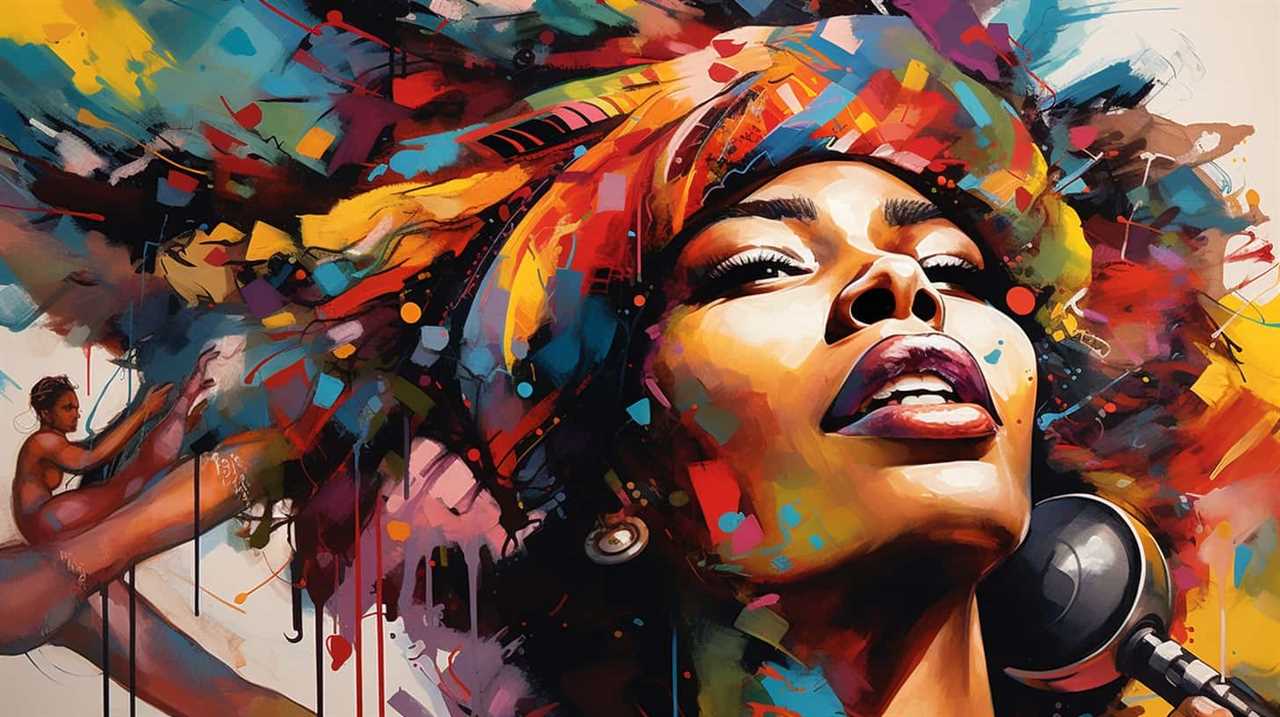
Here are five ways in which art serves as societal critique:
- Art highlights social inequalities, shedding light on marginalized communities and their struggles.
- Art challenges traditional gender roles, questioning the constructs that limit individuals based on their gender identity.
- Art confronts political corruption, exposing the abuses of power and advocating for justice.
- Art questions cultural stereotypes, dismantling harmful assumptions and promoting inclusivity.
- Art critiques consumerism and materialism, urging reflection on the impact of our choices on the environment and society.
Redefining Cultural Boundaries
Through our analysis, we can observe how artistic expression challenges societal norms by redefining cultural boundaries.
Art has the power to reinvent traditions and push the boundaries of what’s considered acceptable or conventional.
By introducing new perspectives and ideas, artists create a space for cultural exchange, allowing different traditions and beliefs to coexist and interact. This exchange not only challenges the status quo but also enriches our understanding of different cultures and fosters a sense of unity and inclusivity. Embracing diverse perspectives in art allows us to break down barriers and stereotypes, encouraging empathy and understanding among people from all walks of life. It also opens up opportunities for collaboration and innovation, as artists from different backgrounds come together to create meaningful and impactful work. Ultimately, the celebration of diverse perspectives in art serves as a reminder of the richness and complexity of the human experience, and the power of creativity to connect us all.

Artistic expression has the ability to break down barriers and bridge divides, encouraging dialogue and collaboration between different communities.
In doing so, it empowers individuals to question societal norms and envision a world that’s more diverse, inclusive, and liberated.
The Impact of Art on Public Perception
From our perspective, art has a profound influence on how the general public perceives various aspects of society. It goes beyond mere aesthetics and self-expression; art has the power to shape public opinion and cultural identity. Here are five ways in which art influences public perception:
- Art as a mirror: Art reflects the realities and experiences of different communities, giving voice to marginalized groups and challenging dominant narratives. Through their work, artists can shed light on social issues, encouraging the public to critically engage with them.
- Art as a catalyst for change: Art has the ability to provoke emotions, spark conversations, and inspire action. It can challenge societal norms, disrupt established power structures, and call for social justice and equality.
- Art as a cultural bridge: Art serves as a medium through which diverse cultures can communicate and connect. It helps to foster understanding, empathy, and appreciation for different perspectives, ultimately breaking down barriers and promoting inclusivity.
- Art as a historical record: Art captures moments in time, preserving the history, struggles, and triumphs of societies. It allows future generations to learn from the past and gain insight into the complexities of their cultural heritage.
- Art as a source of inspiration: Art has the power to inspire individuals to think differently, question the status quo, and imagine alternative futures. It encourages creativity, innovation, and critical thinking, empowering individuals to shape their own perceptions and challenge societal norms.
Art’s Ability to Spark Dialogue
We believe that art has the extraordinary ability to ignite meaningful conversations and foster dialogue within society.
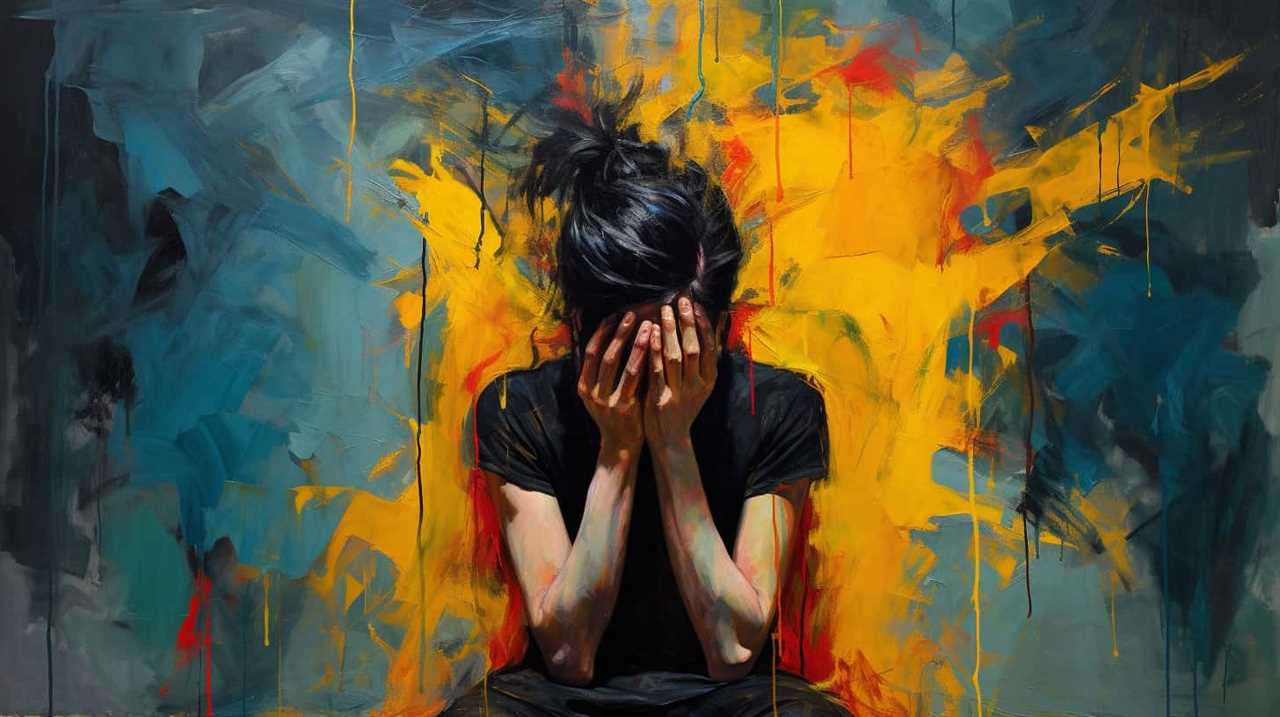
Art’s impact goes beyond its aesthetic value; it has the power to provoke thought, challenge norms, and inspire change. By presenting different perspectives, art can stimulate discussions that promote understanding and empathy.
Art has always played a significant role in shaping societal conversations. From ancient cave paintings to contemporary installations, artists have used their creations to address social, political, and cultural issues. Through their work, they invite viewers to engage in critical thinking and reflection, encouraging them to question their own beliefs and biases.
Art has the potential to bridge divides, bringing people together to discuss important topics. Whether it’s a thought-provoking painting, a powerful photograph, or a captivating performance, artistic expressions have the ability to evoke emotions and provoke dialogue. They create spaces for individuals to share their opinions, exchange ideas, and challenge dominant narratives.
Moreover, art can serve as a catalyst for social change. By shedding light on pressing issues, artists can inspire collective action and mobilize communities. Through their work, they challenge societal norms, push boundaries, and offer alternative perspectives. This can lead to transformative dialogue that challenges existing power structures and fosters liberation.
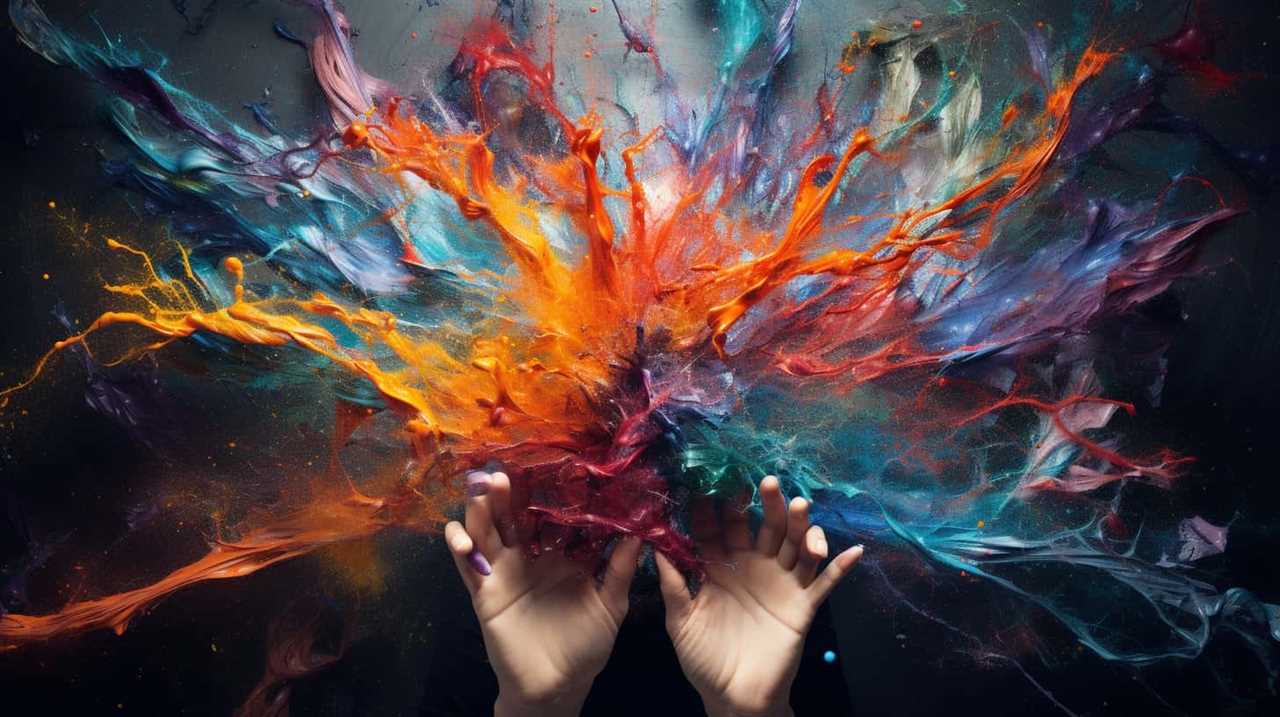
Art’s Role in Redefining Social Constructs
Art critics assert that art shapes society by redefining social constructs through its ability to challenge norms and provoke critical thinking. Art has the power to redefine gender roles and challenge traditional notions of masculinity and femininity. It can break free from the constraints of societal expectations and offer new perspectives on gender identity. Through artistic expression, artists can challenge stereotypes and encourage a more inclusive and fluid understanding of gender.
Furthermore, art plays a vital role in shaping cultural identity. It provides a platform for marginalized voices to be heard and represented. Artists can explore their cultural heritage, traditions, and histories, shedding light on the richness and complexity of different cultures. Art has the ability to challenge dominant narratives and promote cultural diversity and understanding.
In addition, art can challenge societal norms and push boundaries, forcing society to confront uncomfortable truths and question existing power structures. It can challenge the status quo and inspire social change by shedding light on injustice and inequality. Through art, individuals can come together, find common ground, and collectively strive for liberation and social progress.
Art has the power to redefine social constructs and challenge the limitations imposed by society. It has the ability to shape how we perceive and understand gender roles and cultural identity. By encouraging critical thinking and provoking dialogue, art has the potential to liberate individuals from societal constraints and pave the way for a more inclusive and progressive society.
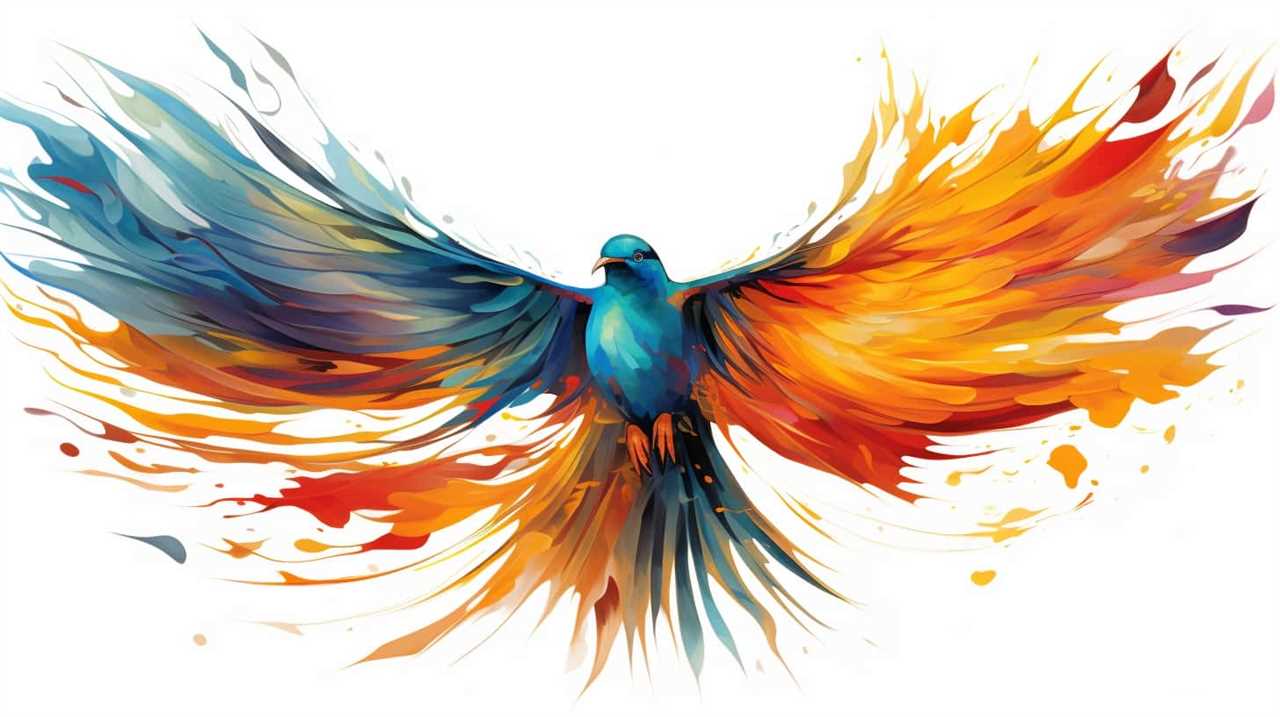
The Intersection of Art and Politics
In the realm of art criticism, the intersection of politics and art is a subject that captivates our attention and prompts us to examine the profound impact that art can have on shaping societal discourse. Artistic expression has long been a powerful tool for political activism, allowing individuals and communities to voice their opinions, challenge existing power structures, and advocate for social change.
To understand the significance of this intersection, let us explore the ways in which art and politics intertwine:
| Artistic Expression | Political Activism |
|---|---|
| Paintings that depict social injustices | Protests and demonstrations |
| Sculptures that challenge prevailing ideologies | Political posters and propaganda |
| Performance art that critiques political leaders | Street art and graffiti |
| Literature that addresses political issues | Music and songs that convey political messages |
| Films that expose government corruption | Theater performances that explore political themes |
Through these various forms of artistic expression, individuals and communities can communicate their political opinions, challenge the status quo, and inspire collective action. Art has the unique ability to transcend language barriers and evoke emotional responses, making it a powerful tool for engaging the masses and mobilizing social movements.
Art’s Role in Addressing Social Issues
Art critics argue that art’s engagement with social issues is integral to its transformative power. Art has the ability to address and promote social justice, making it a powerful tool for activism. Here are five reasons why art plays a crucial role in addressing social issues:

- Art creates awareness: Through its various forms, art has the power to shine a light on social injustices that may otherwise go unnoticed. Whether it’s a thought-provoking painting or a powerful spoken word performance, art has the ability to capture the attention of audiences and raise awareness about important social issues.
- Art sparks conversations: Art has the unique ability to evoke emotions and stimulate dialogue. It can challenge societal norms, provoke critical thinking, and inspire conversations that lead to social change. By addressing social issues through their work, artists can encourage viewers to engage in meaningful discussions about the problems affecting our society.
- Art humanizes marginalized communities: Art has the power to give a voice to those who’ve been silenced or marginalized. Through their creations, artists can share the stories and experiences of individuals and communities that are often overlooked or discriminated against. By humanizing these experiences, art can foster empathy and understanding among viewers.
- Art inspires action: Art has the power to move people to action. Whether it’s a protest poster or a powerful performance, art can motivate individuals to stand up for social justice and take concrete steps towards change. By presenting social issues in a compelling and relatable way, art has the potential to mobilize individuals and communities to fight for a more just society.
- Art challenges the status quo: Art has a long history of challenging the status quo and pushing boundaries. By addressing social issues, artists can disrupt dominant narratives and question the existing power structures. Through their work, artists can challenge societal norms and provoke viewers to question their own beliefs and biases.
The Subversive Nature of Art in Society
When we consider the subversive nature of art in society, we recognize that art has the power to challenge societal norms and inspire social change.
Artistic expressions that push boundaries and provoke thought force society to confront uncomfortable truths and question established beliefs.
Art Challenging Societal Norms
We believe that art has the power to challenge societal norms, pushing boundaries and provoking thought in ways that can be subversive and transformative.
Art has the ability to question the status quo, challenging conventions and promoting alternative perspectives. It serves as a platform for marginalized voices, offering a space for narratives that are often silenced or ignored.
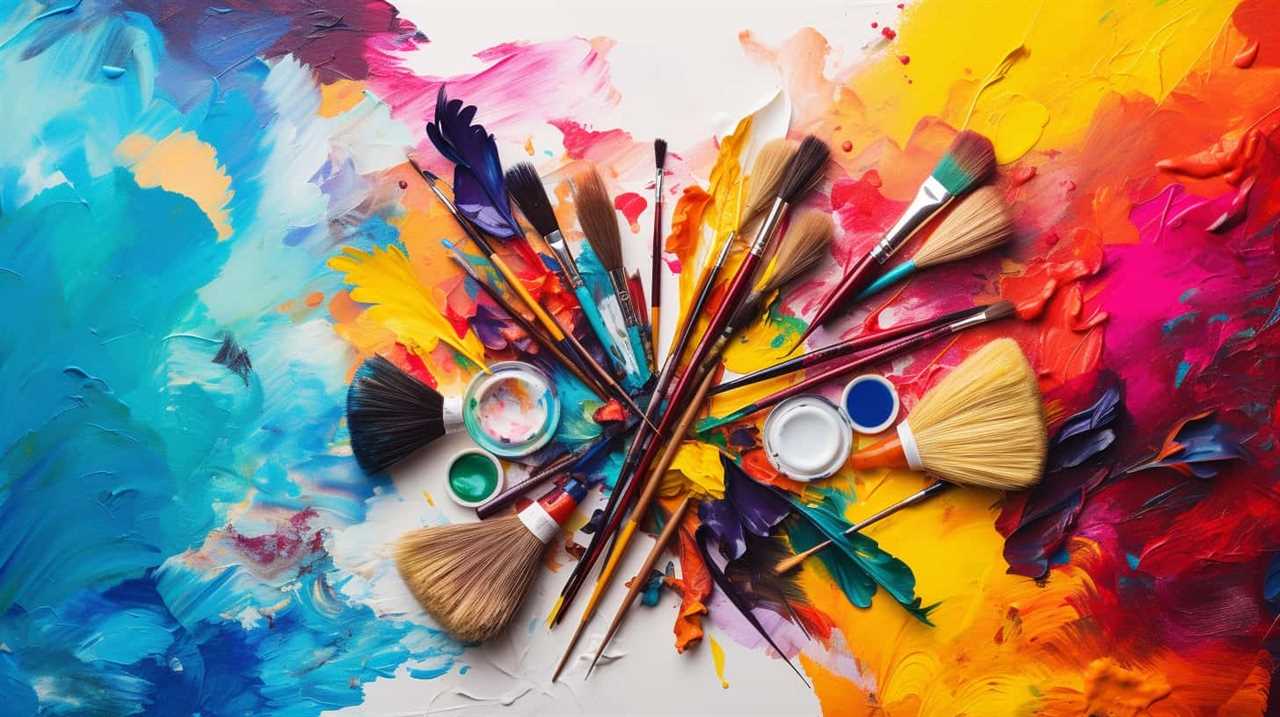
Art can disrupt the dominant discourse, exposing the flaws and biases within society. It can challenge oppressive systems and structures, shedding light on issues that need attention.
Through its subversive nature, art has the potential to ignite conversations, inspire change, and liberate minds. It challenges the way we see the world, inviting us to question our assumptions and consider new possibilities.
Art has the power to challenge societal norms and pave the way for a more inclusive and liberated future.
Art Inspiring Social Change
Continuing from the previous subtopic, our exploration of art’s impact on society reveals its subversive nature in inspiring social change. Art has long been recognized as a powerful form of protest, a tool for social justice, and a catalyst for transformation. It has the ability to challenge the status quo, disrupt oppressive systems, and give voice to marginalized communities. Through its various mediums, art has the unique capability to evoke emotions, challenge perceptions, and ignite conversations that lead to meaningful societal change.
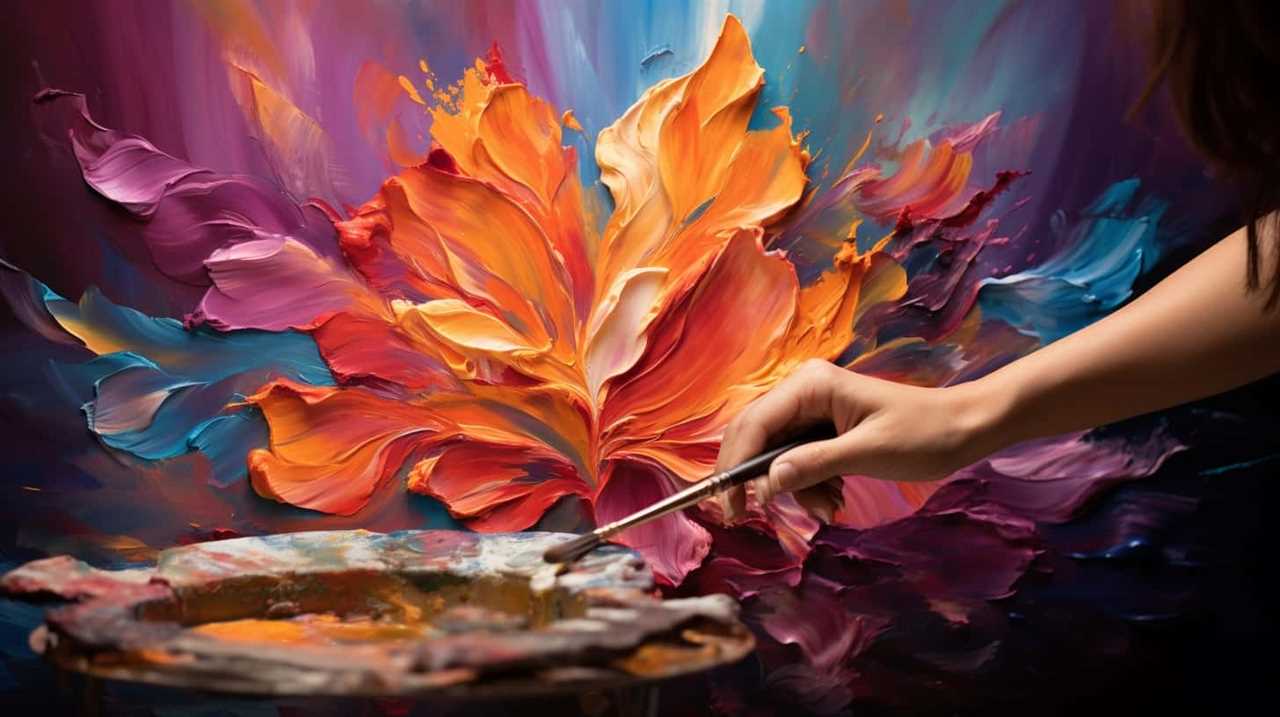
To illustrate this, consider the following table:
| Art as a Form of Protest | Art as a Tool for Social Justice |
|---|---|
| Graffiti and street art | Photography of social injustices |
| Political cartoons | Performance art |
| Protest songs | Documentary films |
| Theater plays | Community murals |
Art’s subversive nature lies in its ability to challenge the dominant narratives, expose inequalities, and empower individuals and communities to fight for justice and equality. By using art as a form of protest and a tool for social justice, artists have the power to inspire, mobilize, and unite people towards collective liberation.
This emphasis on art’s ability to inspire social change seamlessly transitions into the subsequent section about art’s role in promoting diversity and inclusion.
Art’s Role in Promoting Diversity and Inclusion
Art plays a pivotal role in fostering diversity and inclusion within society. Through artistic expression and cultural representation, art has the power to challenge societal norms, break down barriers, and promote a more inclusive and equitable world.
![]()
Here are five ways in which art promotes diversity and inclusion:
- Art amplifies marginalized voices: Art provides a platform for individuals from marginalized communities to share their experiences and perspectives, allowing their voices to be heard and validated.
- Art challenges stereotypes: By presenting alternative narratives and challenging stereotypes, art encourages people to question their preconceived notions and promotes empathy and understanding.
- Art creates spaces for dialogue: Art exhibitions, performances, and installations create spaces for dialogue and engagement, fostering conversations about diversity, inclusion, and social justice.
- Art promotes cultural exchange: Through the exploration of different cultures and traditions, art promotes cross-cultural understanding and appreciation, bridging divides and fostering unity.
- Art empowers marginalized communities: By portraying diverse characters and stories, art empowers marginalized communities, providing them with representation and a sense of belonging.
Art’s role in promoting diversity and inclusion is crucial in creating a society that celebrates and respects the richness of human diversity. It serves as a catalyst for change, inspiring individuals to challenge societal norms and advocate for a more inclusive world.
In the subsequent section, we’ll explore how art acts as a mirror of society, reflecting its values, beliefs, and struggles.
Art as a Mirror of Society
As we delve into the topic of art as a mirror of society, it becomes evident that the works created by artists reflect the values, beliefs, and struggles of the community they exist within. Art has the power to capture the essence of a culture and serve as a powerful tool for self-expression and social commentary. Through their creations, artists not only explore their own cultural identity but also provide a platform for others to reflect upon their own.

Art has long been used as a form of resistance, challenging societal norms and advocating for change. Artists have the ability to shed light on injustices, amplify marginalized voices, and challenge the status quo. By addressing social, political, and economic issues through their work, artists can provoke thought, inspire action, and promote social change.
Moreover, art serves as a reflection of the collective consciousness of a society. It captures the hopes, fears, and aspirations of a community and preserves them for generations to come. By examining the artwork of a particular era, we can gain insights into the social, political, and cultural climate of that time.
In conclusion, art isn’t merely a form of entertainment or decoration; it’s a powerful tool that reflects and shapes society. By exploring themes of cultural identity and using art as a form of resistance, artists bring attention to important issues and encourage critical thinking. Through their work, they challenge societal norms and inspire transformation.
In the next section, we’ll explore the transformative power of art in society.

The Transformative Power of Art in Society
Art has the potential to not only reflect society but also to shape it. As a mirror, art provides a reflection of the collective experiences, values, and concerns of a society.
However, art also has the power to act as a catalyst for change, challenging societal norms, sparking dialogue, and inspiring action.
Through its ability to evoke emotions, provoke thought, and challenge perspectives, art has the transformative power to shape society and create lasting impact.
Art as Societal Mirror
Through our collective experiences and shared narratives, art has the profound ability to reflect and shape the society in which we live.

As a societal mirror, art holds up a reflection of our cultural values, beliefs, and struggles. It serves as a powerful tool for self-reflection, allowing individuals and communities to confront their own biases and prejudices.
Art also has the ability to challenge societal norms and provoke critical thinking, opening up space for dialogue and transformation. In this way, art acts as a catalyst for change, pushing boundaries and inspiring social progress.
It has the potential to ignite empathy and compassion, encouraging individuals to see the world through different perspectives. By creating a platform for marginalized voices and narratives, art has the power to liberate and empower communities, fostering a more inclusive and equitable society.
Art as Catalyst
Art critics argue that the transformative power of art in society lies in its role as a catalyst for change. Art, in its various forms, has the ability to ignite conversations, challenge norms, and inspire action. It has the potential to shake the foundations of society and expose the injustices that exist within it.
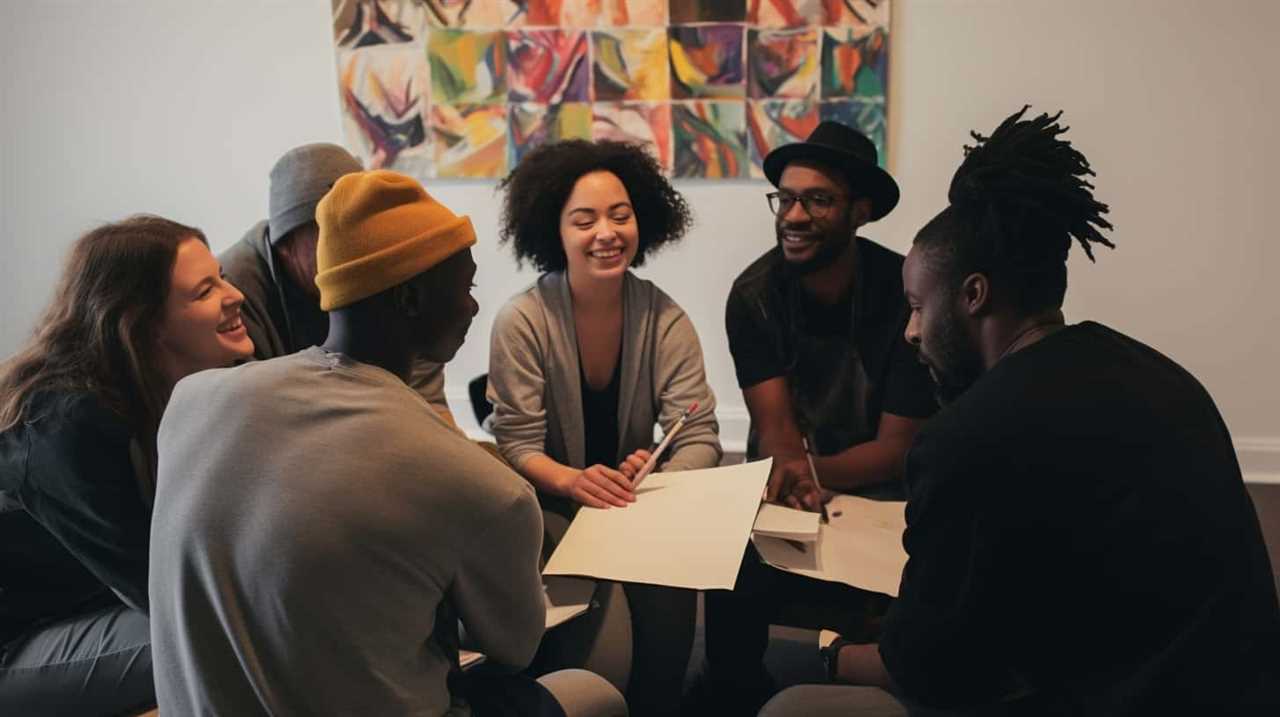
Art as a catalyst can disrupt the status quo, question authority, and push boundaries. It has the power to evoke emotions, provoke thought, and create a sense of urgency. Through its ability to communicate complex ideas and experiences, art can mobilize individuals and communities to demand social change.
This transformative power of art is essential in bringing about a more just and liberated society.
The Responsibility of Artists in Shaping Society
As artists, we hold a collective responsibility to actively shape society through our creations. We aren’t mere observers, but rather catalysts for change. Our role goes beyond the creation of aesthetically pleasing works; it extends to the realm of societal impact.
Here are five ways in which we can fulfill our responsibility and leave an indelible mark on society:
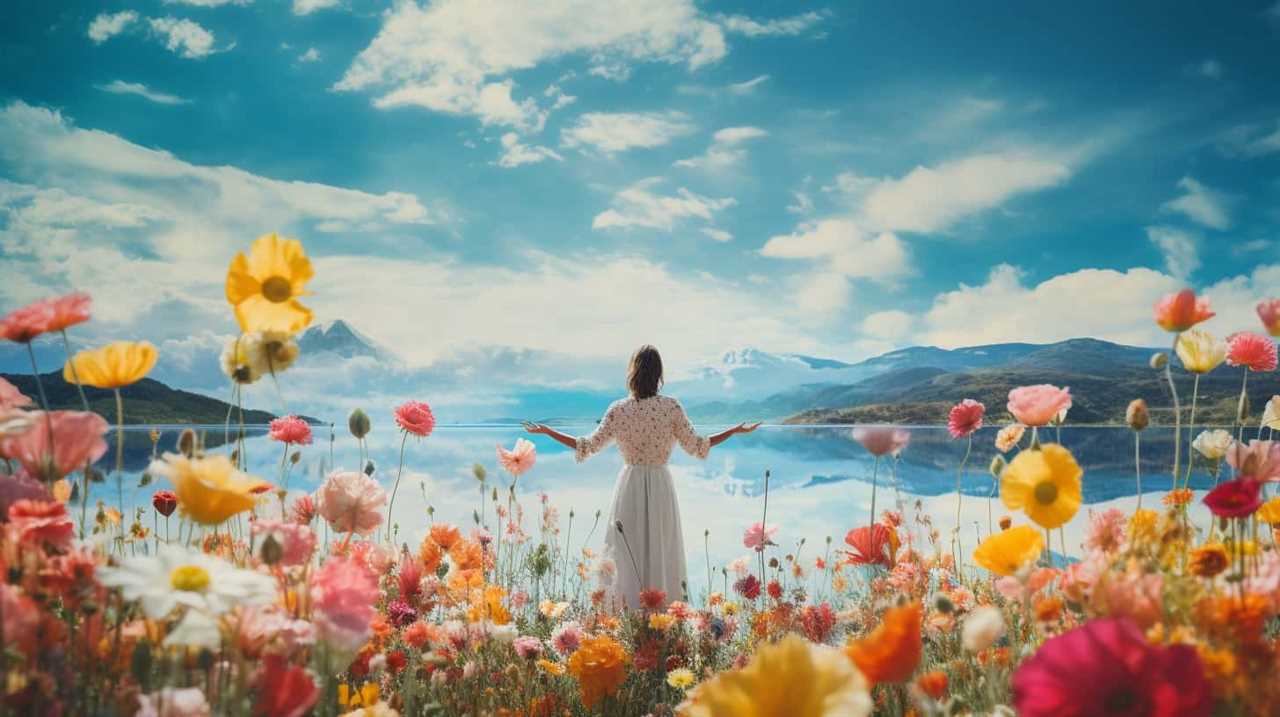
- Provoking thought: Through our art, we’ve the power to challenge prevailing ideologies and stimulate critical thinking. By presenting alternative perspectives, we can help individuals question the status quo and envision a better future.
- Promoting empathy: Art has the ability to evoke emotions and foster understanding. By exploring the human experience, we can bridge the divides that separate us and promote compassion and empathy among diverse communities.
- Amplifying marginalized voices: As artists, we’ve the privilege of having a platform. We must use this platform to amplify the voices of those who’ve been silenced or marginalized. By giving voice to the unheard, we can bring attention to social injustices and advocate for change.
- Inspiring action: Art has the power to motivate action. We can inspire others to take a stand, to join movements, and to become agents of social change. Our creations can serve as a call to arms and ignite a collective desire for liberation.
- Challenging norms: Society often operates within established norms and conventions. As artists, we’ve the ability to challenge these norms and push the boundaries of what’s considered acceptable. By questioning the status quo, we can encourage society to reevaluate its values and strive for progress.
Frequently Asked Questions
How Does Art Impact the Economy?
Art has a significant impact on the economy. Through its ability to attract tourists, stimulate local businesses, and create job opportunities, art contributes to the economic growth and development of a society.
What Are Some Examples of Controversial Art That Has Shaped Society?
Controversial art has shaped society by challenging norms and sparking conversations. Examples include Banksy’s provocative street art and Ai Weiwei’s political installations. These works have a profound impact on society, forcing us to question and redefine our beliefs.
Can Art Alone Bring About Significant Social Change?
Art alone cannot bring about significant social change, but it plays a crucial role in political activism. Through its power to spark dialogue and empathy, art has the potential to inspire collective action and challenge oppressive systems.
How Does Art Challenge and Reshape Traditional Gender Roles?
Art challenges and reshapes traditional gender roles by promoting inclusivity and challenging norms. It provides a powerful platform for marginalized voices, enabling us to question and dismantle oppressive systems.
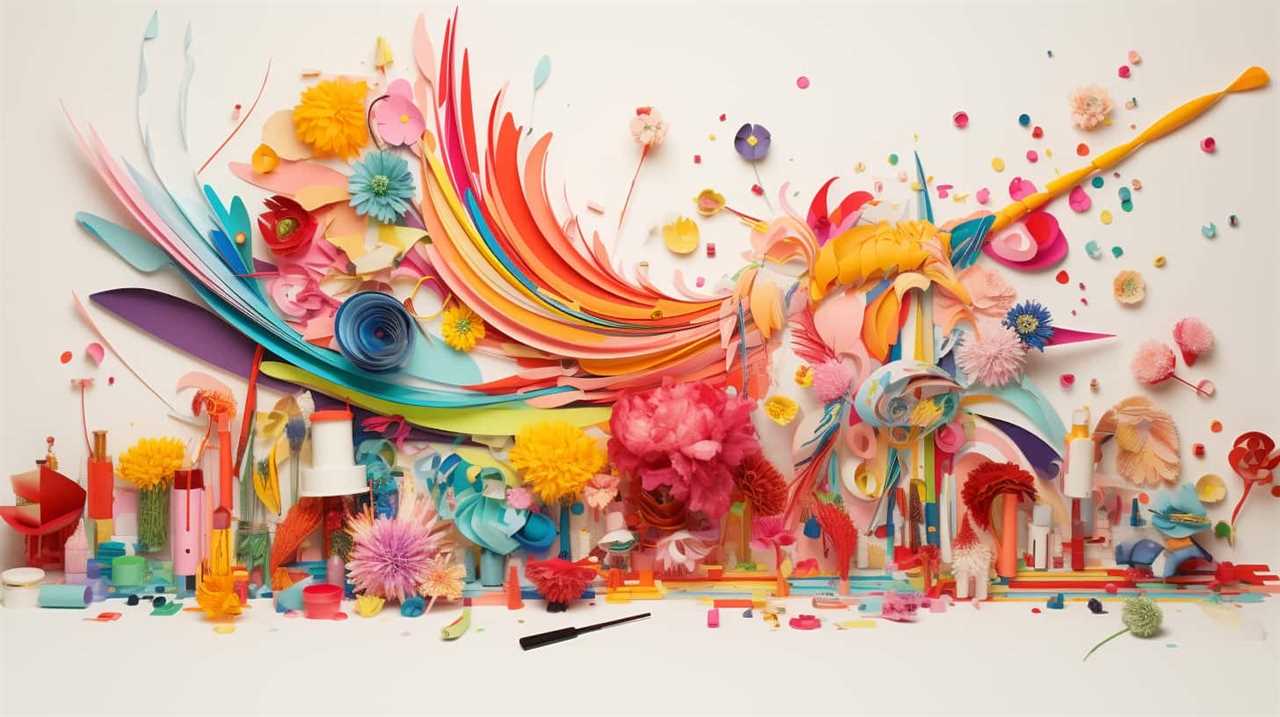
What Is the Role of Art Education in Shaping Society?
Art education’s influence on shaping society is undeniable. Through creative expression and critical thinking, individuals can challenge norms and foster cultural development. Art’s role in shaping society lies in its power to provoke thought, inspire change, and promote liberation.
Conclusion
In conclusion, it’s clear that art critics argue that art has the power to shape society.
How ironic it’s that something as seemingly insignificant as a painting or sculpture can have such a profound impact on the way we think, feel, and interact with each other.
But art has always been a catalyst for change, challenging societal norms and forcing us to question our beliefs.
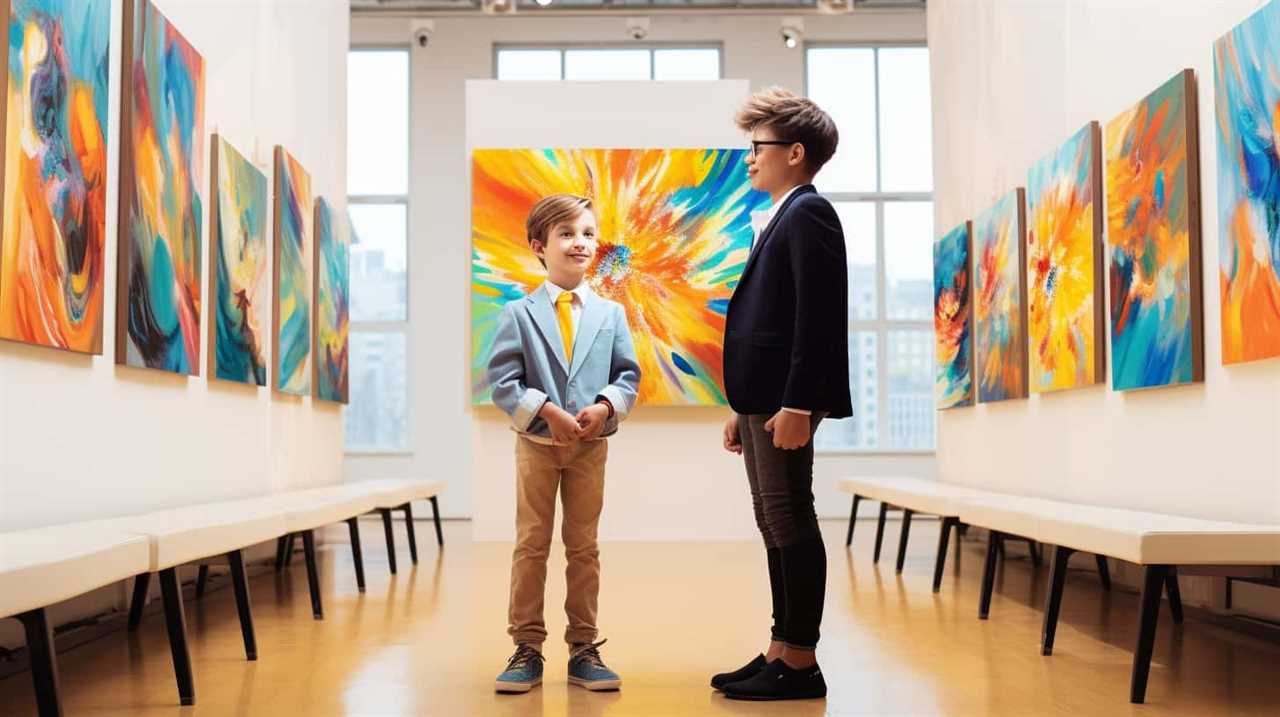
So let’s embrace the transformative power of art and recognize the responsibility of artists in shaping the world we live in.
Lauren’s talent in writing is matched by her passion for storytelling. Her love for books and deep understanding of culture and entertainment add a distinct flavor to her work. As our media and press contact, Lauren skillfully bridges the gap between afterQuotes and the broader media landscape, bringing our message to a wider audience.
